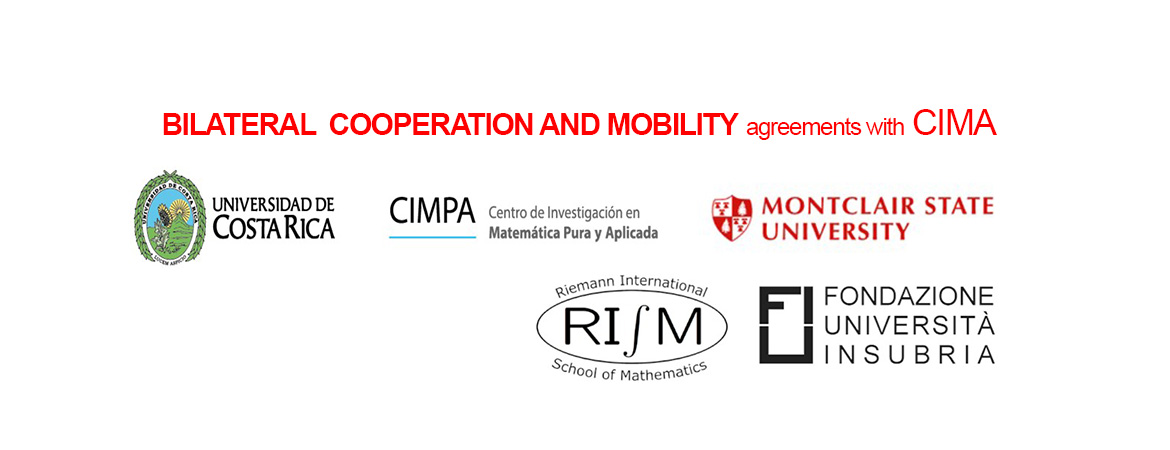- 20/03/2023 - 15h - CLAV Anfiteatro 1
Luís M. Grilo, Universidade de Évora, Universidade NOVA de Lisboa
College students are exposed in their daily lives to unusual or demanding situations (stressors) that pose a perceived threat to their well-being, which can cause them psychological stress or distress. Continuous and excessive stress can lead to a health condition called student burnout. Thus, for a better understanding of the relationship between stress and burnout and their levels of intensity, it is advisable for higher education institutions to adequately monitor their students. This monitoring may help to avoid situations with negative consequences on student performance, which lead, among other things, to dropping out of school. We used two valid and reliable international questionnaires (the well-known Perceived Stress Scale and the Maslach Burnout Inventory-Student Survey) with questions that correspond to observed/manifest variables, measured on an ordinal scale, which are considered to operationalize the latent constructs (ie, not directly observable) 'perceived stress' and 'burnout'. We considered the powerful multivariate statistical technique Structural Equation Modeling (SEM) to investigate the relationships between manifest variables and latent constructs, as well as between the latter ones. Based on the specialized literature, we proposed a theoretical reflective SEM, where 'perceived stress' is the exogenous construct and 'burnout' (considering the three dimensions: 'exhaustion', 'cynicism' and 'efficacy') is the endogenous construct. We obtained an estimated model by applying the consistent Partial Least Squares (PLSc) estimator with a dataset collected in a survey carried out among students at a Portuguese institution. As we expected, 'perceived stress' has a statistically significant positive direct effect on 'exhaustion' and an indirect effect on 'cynicism', where 'exhaustion' also has a direct positive effect. Based on this estimated model and considering the heterogeneity in the dataset, two “submodels” by gender (women and men) were also estimated. The main results of the multigroup analysis show that only the difference in the value of the path coefficient (and also on the effect size, f square) between 'perceived stress' and 'exhaustion' is statistically significant.
References:
[1] Benitez, J., Henseler, J., Castillo, A. & Schuberth, F. (2020). How to perform and report an impactful analysis using partial least squares: Guidelines for confirmatory and explanatory IS research, Information & Management, Volume 57, Issue 2, 103168, ISSN 0378-7206. https://doi.org/10.1016/j.im.2019.05.003
[2] Chang, E. C., Rand, K. L. & Strunk, D. R. (2000). Optimism and risk for job burnout among working college students: Stress as a mediator. Personality and Individual Differences, 29:2, 255 263.
[3] Grilo, L. M. & Mubayi, A. (2022). Data-driven Approach with Structural Equation Modeling Monitors Psychosocial Community Risks. SIAM news. https://sinews.siam.org/
[4] Grilo, L. M., Mubayi, A., Dinkel, K., Amdouni, B., Ren, J. & Bhakta, M. (2019). Evaluation of Academic Burnout in College Students. Application of SEM with PLS approach, AIP Conf. Proc. 2186, 090008; https://doi.org/10.1063/1.5138004.
[5] Hair, J. F., Hult, G. T. M., Ringle, C. M., Sarstedt, M., Danks, N. P. & Ray, S. (2021). Partial Least Squares Structural Equation Modeling (PLS-SEM) Using R. A Workbook, Springer.
[6] Hair, J. F., Risher, J. J., Sarstedt, M. & Ringle, C. M. (2019). When to use and how to report the results of PLS SEM, European Business Review, 31, 1: pp. 2-24. https://doi.org/10.1108/EBR-11-2018-0203
[7] Hair, J. F., Hult, G. T. M., Ringle, C. M. & Sarstedt, M. (2017). A Primer on Partial Least Squares Structural Equation Modeling (PLS-SEM). 2nd Ed., Thousand Oakes, CA: Sage.
[8] Madigan, D. J. & Curran, T. (2021). Does burnout affect academic achievement? A meta-analysis of over 100,000 students. Educational Psychology Review, 33: 387-405.
References:
[1] Benitez, J., Henseler, J., Castillo, A. & Schuberth, F. (2020). How to perform and report an impactful analysis using partial least squares: Guidelines for confirmatory and explanatory IS research, Information & Management, Volume 57, Issue 2, 103168, ISSN 0378-7206. https://doi.org/10.1016/j.im.2019.05.003
[2] Chang, E. C., Rand, K. L. & Strunk, D. R. (2000). Optimism and risk for job burnout among working college students: Stress as a mediator. Personality and Individual Differences, 29:2, 255 263.
[3] Grilo, L. M. & Mubayi, A. (2022). Data-driven Approach with Structural Equation Modeling Monitors Psychosocial Community Risks. SIAM news. https://sinews.siam.org/
[4] Grilo, L. M., Mubayi, A., Dinkel, K., Amdouni, B., Ren, J. & Bhakta, M. (2019). Evaluation of Academic Burnout in College Students. Application of SEM with PLS approach, AIP Conf. Proc. 2186, 090008; https://doi.org/10.1063/1.5138004.
[5] Hair, J. F., Hult, G. T. M., Ringle, C. M., Sarstedt, M., Danks, N. P. & Ray, S. (2021). Partial Least Squares Structural Equation Modeling (PLS-SEM) Using R. A Workbook, Springer.
[6] Hair, J. F., Risher, J. J., Sarstedt, M. & Ringle, C. M. (2019). When to use and how to report the results of PLS SEM, European Business Review, 31, 1: pp. 2-24. https://doi.org/10.1108/EBR-11-2018-0203
[7] Hair, J. F., Hult, G. T. M., Ringle, C. M. & Sarstedt, M. (2017). A Primer on Partial Least Squares Structural Equation Modeling (PLS-SEM). 2nd Ed., Thousand Oakes, CA: Sage.
[8] Madigan, D. J. & Curran, T. (2021). Does burnout affect academic achievement? A meta-analysis of over 100,000 students. Educational Psychology Review, 33: 387-405.






























